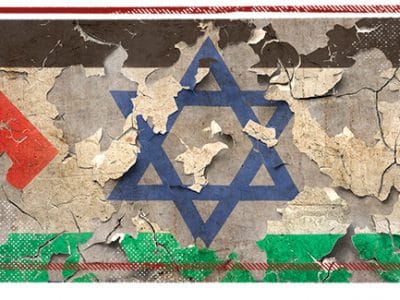Devising a strategy appropriate to the war at hand is fundamental to military success. Neither massive firepower nor effusions of heroically-shed blood will redeem a faulty strategy. The big question in the “Global War on Terror” must be, “Is U.S. strategy appropriate?”
Basic to developing a viable strategy is a clear understanding of the enemy and his objectives. In that regard, a world-wide war on terror makes no strategic sense. Terrorism is a tactic usually employed by the militarily weak against a stronger foe. A nation can no more make war on terrorism than it can make war on ambushes. The enemies in this war are al Qaeda, associated groups like Hezbollah, and nations that support them; specifically Iran and Syria. Their immediate goal is to compel U.S. withdrawal from the Middle East so Israel can be destroyed. Then, they will replace “apostate” regimes in countries like Egypt, Saudi Arabia and Turkey to solidify the Middle East into a united fundamentalist Islamic entity capable of pursuing the ultimate goal of establishing a world-wide Islamic caliphate. While the war is global (and total) and terrorists are among our enemies, terrorism per se is not the enemy.
As a part of its misnamed “Global War on Terror” the Bush administration has devised an offensive strategy with the goal of spreading democracy as a way of lessening the appeal of terrorism. While this may prove a viable strategy, it involves significant risks. Military force to eject al Qaeda from Afghanistan and affect regime change in Kabul succeeds only if Afghan democracy prevails and al Qaeda’s capabilities are degraded. Likewise, the brilliant use of military forces for the purpose of regime change in Iraq succeeds only if Iraq remains democratic. The strategy of democratization through regime change fails if Iraq reverts to totalitarianism, becomes a radical Islamic state, or descends into the kind of chaos that gripped Lebanon in the 1980s. Strategic success in Iraq, however, may mean moving militarily against Iran and Syria: the real enemies in this war. There lies danger.
Iran with nuclear weapons intensifies and complicates the strategic challenge. American (or Israeli) air strikes probably would cripple Iran’s nuclear production facilities. But if Iran and Syria responded by unleashing hundreds of thousands of jihadists on Iraq, coalition forces could be overwhelmed. The Army critically needs at least two additional divisions to counter this possibility and still retain a contingent sufficient for deterring aggression in Korea. Those divisions need not be deployed in addition to those already in Iraq, but they should be available if needed. Even if the defense budget accommodated funding two new divisions, absent a draft it is doubtful they could be recruited. And the draft will remain absent.
The premature withdrawal of U.S. forces from Iraq would be disastrous. While Vietnam War analogies must be used cautiously, the way the Nixon administration ended U.S. involvement in 1973 resulted in debacle for the Republic of Vietnam 15 months later. Nixon’s mistake was to specify the end of his first term as the goal for withdrawing U.S. troops. The strategy for achieving this objective involved invading Cambodia along with secret bombings of enemy sanctuaries in Cambodia and the Ho Chi Minh Trail in Laos. The perception that Nixon was widening the war fed the anti-war movement and, eventually, made it impossible for the Ford administration to continue supporting the Republic of Vietnam. The operation (withdrawal) succeeded; the patient (Vietnam) died. If a similar fate awaits democratic Iraq the consequences will be far greater for the Middle East and, ultimately, for the United States.
Iran and Syria are unlikely to relent in their efforts to deny the success of democracy in Iraq and Afghanistan. Al Qaeda is going to persist in using terrorism to compel a U.S. withdrawal from the Persian Gulf. The United States, having committed to an offensive strategy focused on spreading democracy must either succeed or face a foreign policy debacle with enormous implications for the future.
The enemy’s objectives of compelling U.S. withdrawal from the Middle East and, ultimately, establishing a world-wide Islamic caliphate amount to total war goals. In warfare the level of violence usually corresponds to the totality of the objectives. Prospects of a nuclear-armed Iran and al Qaeda with access to weapons of mass destruction ought to clarify U.S. strategic thinking.
This is a war the United States, indeed the West, must win. Victory, however, demands a clear understanding of our enemies and their objectives. Only then can an appropriate strategy be devised and forces structured, raised and employed effectively to achieve the purposes of war.




